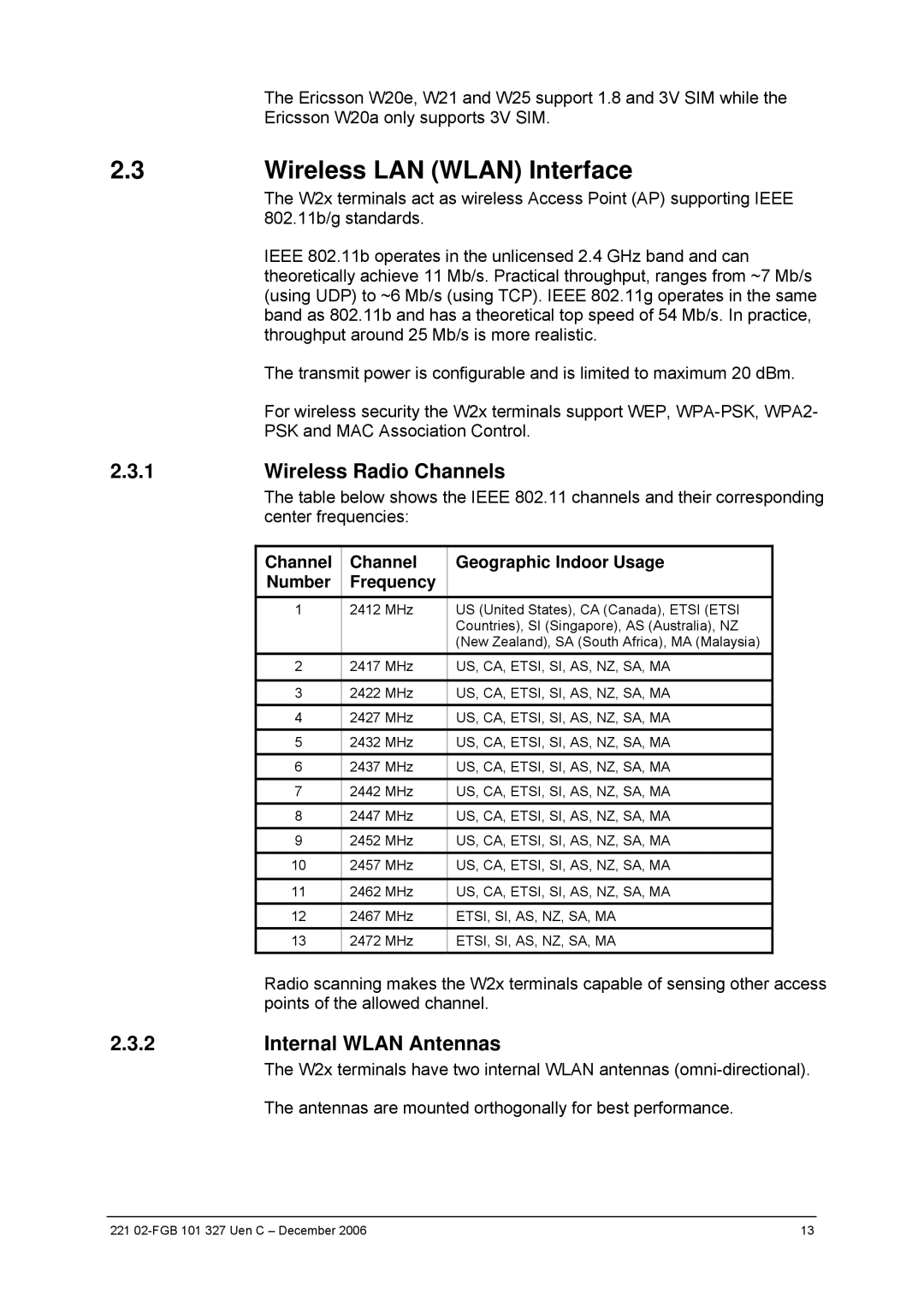W2x Series specifications
The Ericsson W2x Series is a robust line of advanced wireless communication solutions designed to meet the growing demands of both urban and rural environments. With a primary focus on enhancing mobile broadband experiences, the W2x Series represents a significant leap in technological capabilities, featuring both hardware and software innovations that drive connectivity forward.One of the core features of the W2x Series is its support for next-generation mobile standards, including 5G New Radio (NR). This enables operators to deliver higher data speeds, reduced latency, and increased capacity to end-users. Leveraging Massive MIMO technology, the W2x Series utilizes multiple antennas at the base station, allowing for simultaneous connections and more efficient spectrum usage. This results in improved coverage and enhanced overall network performance.
The W2x Series also integrates advanced beamforming techniques. These techniques focus the signal in specific directions, which not only improves signal strength but also minimizes interference. This capability is particularly beneficial in dense urban environments where signal degradation can be a challenge.
In addition to its impressive 5G capabilities, the W2x Series is designed for seamless integration with existing 4G networks, ensuring operators can provide a smooth transition for users without significant disruption. This backward compatibility is crucial as it allows for a gradual rollout of new services while maintaining support for legacy devices.
Power efficiency has been a key consideration in the design of the W2x Series. The advanced hardware is engineered to consume less energy, thereby reducing operational costs and contributing to sustainability goals. Additionally, the series supports Intelligent Energy Management features that optimize power consumption based on real-time usage patterns.
Another distinguishing characteristic of the W2x Series is its modular architecture. This flexibility allows network operators to customize their deployments according to specific regional needs and operational requirements. Whether installed in remote locations or urban centers, the W2x Series can adapt to various physical and environmental constraints.
Security is also paramount in today's connected world. The W2x Series incorporates robust security frameworks that safeguard user data and ensure compliance with international standards. This focus on security fosters trust among users as well as network operators.
In summary, the Ericsson W2x Series stands out with its cutting-edge features, including 5G NR support, Massive MIMO, beamforming technology, and modular design. Combined with energy efficiency and enhanced security, this series is well-equipped to support future wireless demands, making it a vital asset for network operators looking to enhance service offerings and user experiences.
